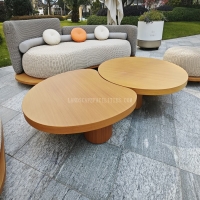Welcome to the website for landscape facilities products and knowledge.
How does marble’s polish affect heat reflection?
Marble, a natural stone prized for its elegance and durability, exhibits unique thermal properties influenced by its surface finish. The polish of marble significantly impacts its ability to reflect heat, making it a critical factor in architectural and design applications.
When marble is polished to a high gloss, its surface becomes smoother and more reflective. This smoothness reduces microscopic irregularities, allowing the stone to reflect a greater portion of incident heat rather than absorbing it. Studies suggest that polished marble can reflect up to 30% more heat compared to unpolished or honed surfaces. This property makes polished marble ideal for environments where temperature regulation is essential, such as sunlit interiors or exterior cladding in warm climates.
Conversely, unpolished or honed marble has a matte finish with a slightly porous surface. This texture increases heat absorption, as the uneven surface traps thermal energy more effectively. While this might be beneficial in colder settings, it can lead to higher ambient temperatures in warm conditions.
The degree of polish also affects marble’s emissivity—the ability to release absorbed heat. Polished marble emits heat more slowly, retaining warmth longer, whereas unpolished marble dissipates heat faster due to its textured surface.
In summary, marble’s polish enhances its heat-reflective capabilities, making it a versatile material for both aesthetic and functional purposes. Architects and designers can leverage this property to optimize energy efficiency and comfort in building projects.
Related search:

Recommendation
Elliptical metal outdoor table with nested design, resembling wood grain, round table